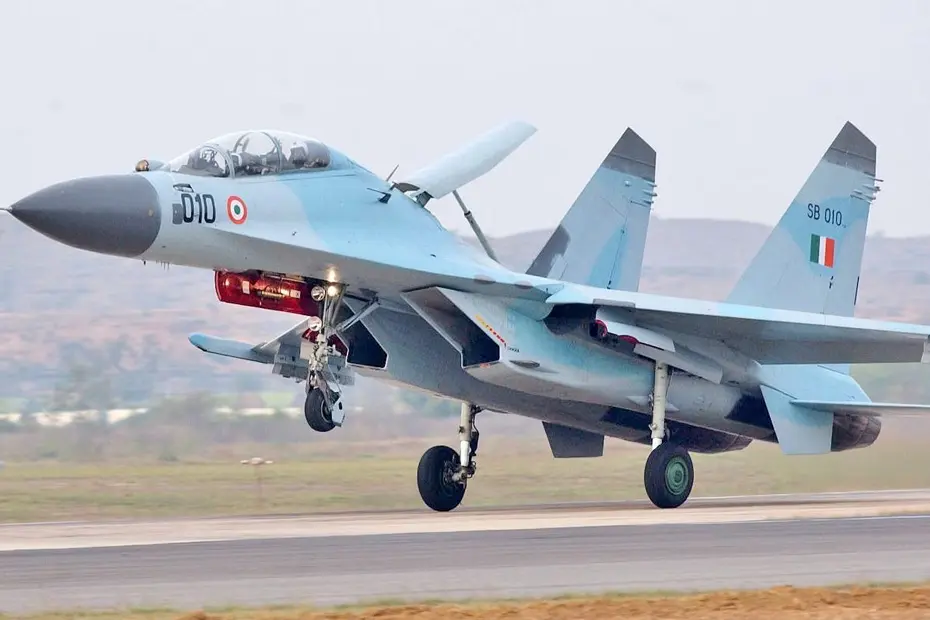DIFFERENT TYPES OF AIRCRAFT
In modem age there are various types of aircraft, which varies from one another in different manners. Following are the various types of aircraft:
- Fixed Wing Civil Aircraft
- Fixed Wing Military Aircraft
- Cargo Aircraft
- Rotary Wing Aircraft
FIXED WING CIVIL AIRCRAFT
Aircraft vary greatly size and design, ranging from the ultra light single and two seaters to the four engine “stretched” passenger aircraft seating 600 or more people. A fuel load of 200,000 litres is not uncommon and speeds of up to 1000 Kph are usual for large civil aircraft. The construction of aircraft varies with their projected use. It is not intended to describe the older type of medium size aircraft because by virtue of their design, they do not represent so great a problem to fire fighter in their passenger capacities, fuel loads and access to the aircraft following an accident.
FIXED WING MILITARY AIRCRAFT
Fixed wing military aircraft range from very large four engine transports to single i seat fighters including supersonic attack aircraft and those capable of vertical take off and landing (VTOL). Military aircraft often crash a long way from their airfield bases and therefore the likelihood that local authority firefighters may have to carry out initial rescue and firefighting is a distinct possibility. There is also the possibility that military aircraft may use a civil airport for a number of reasons including air displays, diversions, training fights, troop movements or temporary stationing. With this in mind, some knowledge of the construction design special features and rescue techniques on contemporary military aircraft is essential for firefighters.
AIRCRAFT BODY CONSTRUCTION
FUSELAGE
The tapering shape of the fuselage is formed by a series of vertical metal frames placed transversely from nose to tail. Metal stringers running horizontally along the length of the fuselage are spaced around the circumference of the frames. Internally placed stringers made of stronger and thicker metal, which are called longerons, are continuous along the length of the fuselage and serve as attachment point for the cabin floors, cargo holds etc. the skin is not merely a sheet metal covering but is stressed according to load it must take and contributes to the total rigidity of the airframe. The skin panels may either be riveted or bonded to a number of stringers to form a separate assembly, which is then riveted to the frames. When the skin is bonded there is no external indication of the underlying framework. Due to pressurization, the fuselage of most modem aircraft consists of a double skin with a suitable insulation material interposed. The system of construction described is usually referred to as “Semi- Monocoque”.
MAINPLANE (WINGS)
Tapering metal spars run from the center section to the wingtips, or from wingtip to wingtip running through the fuselage. Their vertical height forms the thickness of the wings. Some aircraft have only two spars but many have several which vary in length according to the wing configuration, i.e. swept Delta, crescent etc. Short metal struts known as ribs are closely spaced at right angles to the spars and form the profile of the aerofoil of the wings. The whole construction is covered by the skin. This again, forms part of the structure and is either bonded or riveted to the spares.

A part or surface, such as a wing, propeller blade, or rudder, whose shape and orientation control stability, direction, lift, thrust, or propulsion. An airfoil produces a lifting force that acts at right angles to the airstream and a dragging force that acts in the same direction as the airstream. High-speed aircraft usually employ thin, low-drag, low-lift airfoils; slow aircraft that carry heavy loads use thicker airfoils with high drag and high lift.

Airfoil terminology
The various terms related to airfoils are defined below:
- The mean camber line is a line drawn midway between the upper and lower surfaces.
- The chord line is a straight line connecting the leading and trailing edges of the airfoil, at the ends of the mean camber line.
- The chord is the length of the chord line and is the characteristic dimension of the airfoil section.
- The maximum thickness and the location of maximum thickness are expressed as a percentage of the chord.
- For symmetrical airfoils both mean camber line and chord line pass from centre of gravity of the airfoil and they touch at leading and trailing edge of the airfoil.
- The aerodynamic center is the chord wise length about which the pitching moment is independent of the lift coefficient and the angle of attack.
- The center of pressure is the chord wise location about which the pitching moment is zero.

From top to bottom: Laminar flow airfoil for a RC park flyer, laminar flow airfoil for a RC pylon racer, laminar flow airfoil for a manned propeller aircraft, laminar flow at a jet airliner airfoil, stable airfoil used for flying wings, aft loaded airfoil allowing for a large main spar and late stall, transonic supercritical airfoil, supsersonic leading edge airfoil. Colours: Black=laminar flow, red=turbulent flow, grey=subsonic stream, blue=supersonic flow volume
UNIT (Empennage)
The tail unit is constructed in much the same way as the main plane. It consists of the tail i plane, which aids longitudinal stability and the tailfin, which aids directional stability. Movable control surfaces on the unit consist of elevator to control dive and climb and the rudder to control the direction of the aircraft. An assembly at the rear of an airplane, consisting of the tail cone, the horizontal tail, and one or more vertical tails.
The tail assembly, or empennage, of an airplane is normally composed of a vertical tail and a horizontal tail attached to the rear, or tail cone, of the airplane’s fuselage. The vertical tail is composed of the vertical stabilizer and the rudder. The vertical stabilizer is attached rigidly to the fuselage and is intended to provide stability about a vertical axis through the airplane’s center of gravity. The rudder is attached by hinges to the rear of the vertical stabilizer and can rotate from side to side in response to pilot control input. It also contributes to stability, but its main function is to provide a yawing moment about the airplane’s vertical (yaw) axis, thereby causing the airplane to yaw (turn) to the left or right.
The horizontal tail, similar to the vertical tail, is composed of the horizontal stabilizer and the elevator. The horizontal stabilizer is fixed rigidly to the fuselage and provides stability about a horizontal axis directed along the wing and through the center of gravity, and known as the pitch axis. The elevator is hinged to the rear of the horizontal stabilizer and rotates up and down as the pilot moves the control column fore and aft. The elevator also contributes to stability about the pitch axis, but its main purpose is to provide a pitching moment about the pitch axis, which causes the airplane to nose up or down. Airplanes that operate at supersonic speeds usually have the horizontal tail swept back and in one piece that is movable and is controlled by the motion of the pilot’s control stick. Such a surface is frequently called a stabilator.
PHYSICAL PROPERTIES OF VAPOUR METALS
Duralumin : Aluminium with about 4% copper and 1 % each of magnesium, manganese and silicon.
Alclad : Duralumin with a surface finish of pure aluminum.
Magnesium : Aluminium with about 2% copper and 2-10% magnesium.
Magnesium (and its alloys): Magnesium alloy castings and sheets are used to minimize weight in areas where bulkiness is no object, such as engine mounting brackets, crankcase sections and other engine parts.
Stainless steel and titanium alloys: Where greater strength or resistance to heat is required, stainless steel and titanium alloys are necessary.
AIRCRAFT ENGINES
PISTON ENGINES
Piston engines are rare on large aircraft and the hazards they present are relatively slight, although one potential danger is the presence of a propeller. Broken fuel or oil lines, especially if they are close to hot exhausts, or damaged electrical wiring is the most likely cause of fire. Provided that the fire has not penetrated the fire resistant bulkhead, which separates the engine from the adjoining parts of the aircraft. The application of Halons, CO2 or Water fog will usually be sufficient to extinguish any fire.
These types of engines may be divided into three main categories:
- In-line
- Flat (horizontally)
- Radial
TURBINE ENGINES
These types of engines can be divided into three main categories:
- Turbojet
- Turbofan
- Turboprop
Each of these present their own special problems when dealing with fires within their engine compartments, for example, the Turboprop has a drive shaft standing forward to drive propeller. For firefighters the main problem associated with these types of engines can be fuel spilling from broken pipes in a spray mist form or an internal fire within the combustion chamber following a crash.
Most modem jet engine aircraft have engines located under the wing and are therefore fairly low to the ground and readily accessible. Some aircraft have additional rear mounted engines and these represent problems for access and the application of media. The majority of fires within aircraft engines will usually be associated with the accessory section.
This section contains the following:
- Fuel pumps
- Fuel lines
- Hydraulic pumps
- Hydraulic lines
- Oil pumps
- Oil lines
- Gearbox (if turboprop)
- Electrical generators
If any of the fuel pumps or fuel lines leak, the fuel or lubricants will be released in mist form under high pressure.
Type of fuel
Fuel for aviation use broadly fall into two ways, two types, petrol( gasoline) and kerosene.
Petrol (gasoline or avgas)
Petrol, also know as gasoline or avgas is used in piston engine aircraft, the fuel having different grades. These grades are a characteristic of the octane rating of the fuel, which means that there composition, differs depending on the engine compression ratio. The grade octane rating) of gasoline will have no bearing on the flammability of the fuel.
Kerosene:
These fuels are used in turbine engine aircraft and fall in two categories:
- Avtur (jet AI)
Avtur or jet al is the most widely and commonly used kerosene fuel Avtur will not ignite under normal temperature at pressure but may do so if sprayed into a hot engine following a crash. - Avtag (Jet B)
Avtag is a wide cut fuel of approximately 60% gasoline and 40% kerosene. Avtag will readily ignite at normal temperature and pressure having the characteristics of Avgas.

Limits of Flammability
Fuel
Avgas : 1.4% – 7.6%
Avtur : 0.7% – 5.8%
Avtag : 0.8% – 5.0%
FUEL TANKS
Fuel is carried in a number of structurally separate but interconnected tanks and can be found in the wings, fuselage and the tail plane of an aircraft. The principal types of fuel tank are:
Rigid tanks:
These are usually constructed from sheet aluminum with internal baffles. The baffles reduce surge and help to strengthen the tank. They are often covered with fabric, and have a vent pipe, an over flow, a base sump and a fuelling orifice. These tanks are usually set in cradles within the wings or fuselage and are strapped in and bonded to the aircraft to prevent the formation of static electricity.
Integral tanks:
Integral tanks use the aircraft airframe compartment for storing fuel. These are invariably found in the wings but may additionally be located in the fuselage and tail frame area. The use of the aircraft’s produces the lightest of fuel tanks and the most commonly used in the larger contemporary passenger carrying aircraft. Any aircraft accident can readily distort or damage such tanks, or spit joints with a consequential release of fuel.

Flexible tanks
These thanks are flexible bags made of plastic, nylon or neoprene rubber or other man made material, which are fitted into the wings or the fuselage and secured by press- studs. These tanks have the advantage of being very resistant to shock and may not surer damage in an accident unless they are cut on jagged metal surfaces.
However, because of their construction material, they are flammable and give off toxic vapour when burning.
Auxiliary tanks
Many aircraft cab be fitted with extra fuel tanks and generally these will be found under the fuselage or main-plane or at the wingtips. Wingtip fuel tanks are usually made of fiberglass or similar man made mineral fiber, lightweight fabrication. Larger tanks are likely to be made of aluminium using the stressed skin construction similar to the fuselage.
The normal procedure when flying is to use the fuel in these tanks first so that should any emergency arise these tanks (empty) can be jettisoned as an emergency procedure. The materials used in the construction of fuel lines vary form one manufacturer to another and in the type of aircraft in which they are fitted. They may consist of stainless steel, aluminium alloy, and flexible rubber or reinforced neoprene rubber hose. The diameter of a fuel line is consistent with the size of aircraft ranging from 3mm on the smallest to 100mm on the largest aircraft; the average being approximately 10mm-15mm. Great care must be taken if cutting has to be carried out as fuel lines are routed through a great many structural elements such as the cabin floor, cargo holds and many other locations.




